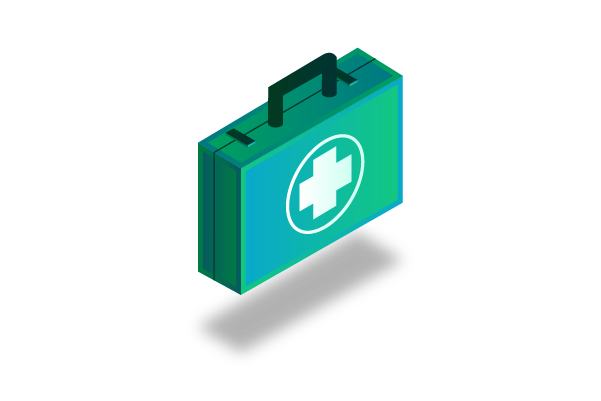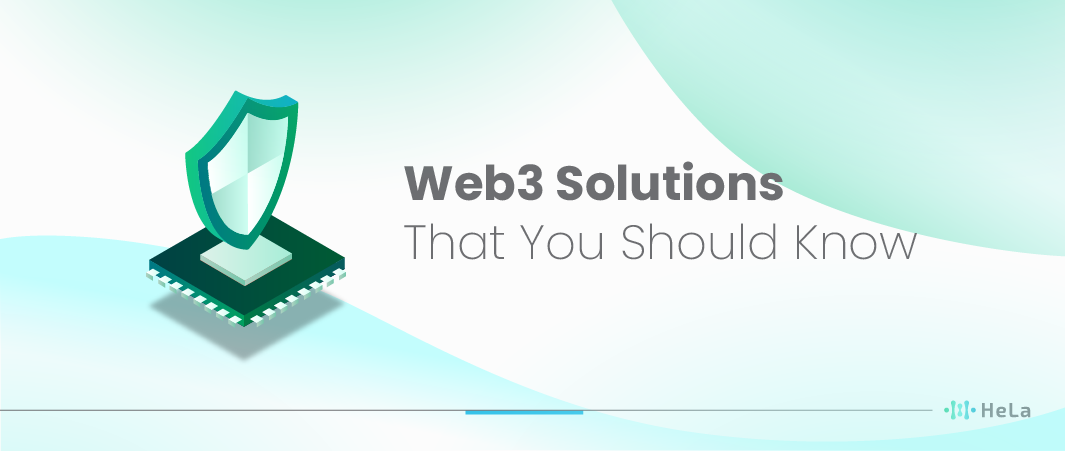In today’s ever-changing digital world, Web3 emerges as the next big thing on the internet scene, bringing with it decentralization, blockchain tech, and a stronger focus on giving users more power. This article takes a closer look at why Web3 matters and how it has the potential to shake up various industries by providing better security, transparency, and control for users. We’ll dig into the practical applications of Web3 solutions across finance, healthcare, education, governance, and more, shedding light on just how transformative they can be.
Web3 solutions, with their emphasis on decentralization and blockchain, are becoming key players in reshaping our digital landscape. They offer enhanced security measures, ensuring that user data is more protected than ever before. Transparency is also a significant perk, with blockchain technology enabling a traceable and verifiable record of transactions. This not only builds trust but also opens up new possibilities for innovation in sectors like finance, where smart contracts and decentralized finance (DeFi) are gaining momentum.
The transformative potential of Web3 solutions isn’t confined to just one industry. In finance, they’re revolutionizing the way transactions occur, making them more efficient and secure. In healthcare, the decentralized nature of Web3 solutions could streamline data sharing while maintaining privacy. Education stands to benefit from increased transparency and accessibility, and governance could become more democratic with decentralized decision-making. The ripple effects of Web3 are vast, promising a digital landscape that prioritizes user empowerment and innovation.
Understanding Web3 and Its Core Technologies
Web3 refers to the third generation of the internet, aiming to create a more decentralized and user-centric online ecosystem. Unlike its predecessors, Web1 (the early static web) and Web2 (the social and interactive web), Web3 leverages a set of core technologies that redefine the way information and value are exchanged on the internet.
One of the foundational technologies of Web3 is blockchain. Blockchain is a distributed and tamper-resistant ledger that enables secure and transparent transactions without the need for intermediaries. This technology forms the basis for decentralized applications (DApps), which operate on a peer-to-peer network rather than relying on a central authority.
Smart contracts play a crucial role in Web3 by automating and enforcing the terms of agreements without the need for intermediaries. These self-executing contracts run on blockchain platforms like Ethereum, allowing developers to create decentralized applications with programmable functionalities. This opens up new possibilities for creating trustless and censorship-resistant systems.
Interoperability is another key aspect of Web3. Different blockchain networks and decentralized platforms often operate in isolation, hindering seamless communication and collaboration. Interoperability solutions, such as cross-chain protocols and standards like Polkadot and Cosmos, aim to connect these disparate networks, fostering a more cohesive and interconnected Web3 ecosystem.
Decentralized identity (DID) is a critical component of Web3, addressing privacy and security concerns associated with centralized identity systems. DID enables users to have control over their digital identities, allowing them to share only the necessary information with different applications and services without compromising their privacy.
Also Read: What Are Sidechains? Revolutionizing Blockchain Scalability
Additionally, decentralized storage and content delivery networks (CDNs) are integral to Web3. Projects like IPFS (InterPlanetary File System) provide a peer-to-peer method for storing and sharing content, reducing reliance on centralized servers and mitigating issues related to censorship and data ownership.
Financial Services Revolution through Web3
The Financial Services Revolution through Web3 signifies a paradigm shift in the traditional financial landscape, ushering in a new era of decentralization, transparency, and enhanced efficiency. This evolution is characterized by decentralized protocols, blockchain technology, and smart contracts.
Blockchain Technology
The utilization of blockchain technology is a key component, enabling the creation of secure, immutable, and transparent ledgers. This eliminates the need for centralized authorities in financial transactions, reducing the risk of fraud and enhancing overall security.
Smart Contracts
Smart contracts play a crucial role by automating and enforcing the execution of contractual agreements without the need for intermediaries. These self-executing contracts streamline processes and contribute to the efficiency of financial transactions.
Decentralized Finance (DeFi)
A prominent manifestation of Web3, DeFi platforms leverage blockchain and smart contracts to recreate traditional financial services such as lending, borrowing, trading, and asset management in a decentralized and permissionless manner. This opens up financial opportunities globally, providing access to services that were previously restricted.
Cryptocurrencies and Digital Assets
Cryptocurrencies, as digital assets built on blockchain technology, play a central role in the Web3 financial landscape. They serve as mediums of exchange, stores of value, and programmable assets, facilitating more complex financial transactions. Non-fungible tokens (NFTs) add another layer by tokenizing unique digital or physical assets, revolutionizing concepts of ownership and value representation.
Web3 in Healthcare: Ensuring Data Integrity and Privacy

Web3 in healthcare refers to the integration of blockchain technology and decentralized principles to enhance data integrity and privacy in the healthcare industry. The traditional healthcare system often faces challenges related to the security and privacy of patient data, leading to concerns about unauthorized access, data breaches, and tampering. Web3 technologies aim to address these issues by leveraging the inherent security features of blockchain.
Blockchain, the underlying technology of Web3, is a distributed and immutable ledger that records transactions across a network of computers. In healthcare, this translates to a secure and transparent system where patient data is stored in a decentralized manner, reducing the risk of a single point of failure and unauthorized access. Each transaction or update to the patient’s record is cryptographically linked to the previous one, creating a tamper-proof and auditable history.
The use of smart contracts, self-executing contracts with the terms of the agreement directly written into code, further enhances the capabilities of Web3 in healthcare. Smart contracts can automate processes such as consent management, ensuring that access to patient data is granted only when explicit permission is given. This not only streamlines administrative tasks but also strengthens patient control over their own health information.
Moreover, Web3 in healthcare promotes interoperability by enabling seamless data exchange between different healthcare entities. Patients, healthcare providers, insurers, and researchers can securely share information without compromising the integrity of the data. This interconnected and transparent system can lead to more accurate diagnoses, improved treatment plans, and better overall healthcare outcomes.
However, the adoption of Web3 in healthcare comes with its own set of challenges. Regulatory compliance, standardization of data formats, and the integration with existing healthcare systems are among the considerations that need to be addressed. Additionally, the energy consumption associated with some blockchain networks raises environmental concerns, necessitating the development of more sustainable solutions.
As the healthcare industry continues to explore innovative ways to address data integrity and privacy concerns, Web3 technologies present a promising avenue for transforming the landscape of healthcare data management. The potential benefits include heightened security, improved patient trust, and a more efficient and collaborative healthcare ecosystem.
The Role of Web3 in Education and Knowledge Sharing

Web3, the next generation of the internet, is poised to revolutionize education and knowledge sharing by introducing decentralized, transparent, and user-centric systems. In this transformative landscape, several key aspects play pivotal roles:
Decentralized Learning Platforms
Web3 enables the creation of decentralized learning platforms that operate on blockchain technology. These platforms ensure transparency in certifications, facilitate secure and verifiable credentialing, and empower learners with ownership of their educational records.
Tokenization of Educational Assets
The integration of blockchain and smart contracts allows for the tokenization of educational assets. This includes certificates, degrees, and even specific skills. By tokenizing these assets, individuals can easily prove and transfer their qualifications across various platforms and institutions.
Peer-to-Peer Knowledge Exchange
Web3 fosters peer-to-peer knowledge exchange through decentralized networks. Smart contracts enable users to directly exchange value for educational content or services without the need for intermediaries, making learning more accessible and affordable.
Immutable Academic Records
Blockchain technology ensures the immutability of academic records. This feature prevents fraudulent activities, such as falsifying qualifications, and provides a secure and unalterable record of an individual’s educational journey.
Incentivizing Content Creation
Web3 introduces token incentives for content creators and educators. By rewarding contributors with tokens, the system encourages the development of high-quality educational content, fostering a collaborative and dynamic learning environment.
Global Access to Education
With the decentralized nature of Web3, barriers to accessing education are significantly reduced. Blockchain-based educational platforms can facilitate global participation, allowing learners from diverse backgrounds to engage in educational opportunities without geographical constraints.
Smart Contracts for Learning Agreements
Smart contracts can be utilized to create and enforce learning agreements. These contracts automate processes such as course enrollment, payment, and certification issuance, streamlining administrative tasks and ensuring a trustless environment for educational transactions.
The integration of Web3 technologies in education holds the promise of a more inclusive, transparent, and efficient learning ecosystem. By leveraging decentralized principles and blockchain features, the educational landscape stands to benefit from enhanced security, accessibility, and collaborative opportunities.
Governance and Public Sector: Transparency through Web3

In the realm of Governance and Public Sector, the integration of Web3 technologies has emerged as a transformative force, ushering in a new era of transparency and accountability. This paradigm shift is characterized by decentralized, blockchain-based systems that enhance the efficiency and trustworthiness of public sector operations. Below are key aspects that illustrate the impact of Web3 on governance and public sector transparency:
Blockchain Governance
Web3 leverages blockchain technology to establish transparent and tamper-proof record-keeping. Through the use of decentralized ledgers, every transaction and decision within the public sector becomes traceable and verifiable. This not only reduces the risk of corruption but also fosters a culture of accountability.
Smart Contracts
The implementation of smart contracts in public sector processes automates and enforces predefined rules without the need for intermediaries. This not only streamlines administrative procedures but also ensures that agreements are executed precisely as intended, minimizing the potential for human error or malfeasance.
Decentralized Identity Systems
Web3 facilitates the development of decentralized identity systems, offering citizens greater control over their personal information. Through the use of self-sovereign identities on the blockchain, individuals can selectively disclose relevant details, enhancing privacy while still participating in public services.
Open Data and Interoperability
Web3 promotes the concept of open data, enabling seamless sharing and accessibility of information across government departments. Interoperability between different systems and databases ensures that data silos are broken down, fostering collaboration and a holistic view of public sector activities.
Also Read: Gas Limit: Controlling Execution Costs
Citizen Engagement through DAOs
Decentralized Autonomous Organizations (DAOs) empower citizens to participate directly in decision-making processes. Through transparent voting mechanisms on the blockchain, citizens can voice their opinions on policies, budgets, and other critical matters, fostering a more inclusive and responsive governance model.
Cryptoeconomics for Public Services
The integration of cryptoeconomic models allows for innovative funding mechanisms for public services. Tokenized incentives and disincentives can be introduced to encourage responsible behavior and discourage misconduct, creating a self-regulating ecosystem within the public sector.
The adoption of Web3 technologies in governance and the public sector signifies a departure from traditional, centralized models toward a more transparent, efficient, and inclusive approach. As these technologies continue to evolve, the potential for positive impact on the functioning of government entities and the relationship with citizens becomes increasingly evident.
Conclusion
In a nutshell, Web3 is on the brink of transforming various industries with its promise of secure, transparent, and user-friendly solutions. Its potential is immense, offering a decentralized and blockchain-powered approach to innovation. Yet, as we look ahead, it’s crucial to acknowledge the hurdles like scalability issues and regulatory considerations. Despite these challenges, the continuous progress in the Web3 realm signals a forthcoming impact on global sectors, shaping a new era of decentralized solutions that could redefine how we interact with technology and each other.
Taking a closer look, Web3 stands ready to revolutionize the way we engage with digital platforms. Its emphasis on security and transparency is set to redefine user experiences across various sectors. However, it’s not all smooth sailing, with concerns about scalability and the need for regulatory frameworks. As the Web3 landscape evolves, it becomes evident that overcoming these challenges will be key to unlocking its full potential and paving the way for a more decentralized and interconnected digital future.
In the grand scheme of things, Web3’s transformative power extends beyond buzzwords. Its impact on global industries is becoming increasingly palpable as developments unfold. The ongoing strides in the Web3 space signify a shift towards a future where decentralized, blockchain-driven innovations play a central role in shaping the way we navigate and interact with the digital world. While obstacles exist, the trajectory suggests that we are on the cusp of witnessing a significant shift towards a more inclusive, transparent, and innovative era driven by Web3 technologies.
Disclaimer: The information provided by HeLa Labs in this article is intended for general informational purposes and does not reflect the company’s opinion. It is not intended as investment advice or recommendations. Readers are strongly advised to conduct their own thorough research and consult with a qualified financial advisor before making any financial decisions.

I am Carina Caringal, a technical writer specializing in blockchain engineering concepts, decentralized systems, crypto infrastructure, and Web3 technologies. My work focuses on analyzing and translating complex technical mechanisms into precise, structured, and insightful content for both developers and non-technical readers who want a deeper understanding of the decentralized ecosystem.
My background in blockchain and cryptocurrency is rooted in years of independent research, continuous learning, and hands-on exploration across multiple protocols and network architectures. I study the underlying mechanics of distributed ledger technology, from consensus algorithms and smart contract logic to network scalability, security models, cryptographic principles, and interoperability frameworks. This technical foundation shapes the way I approach every article, ensuring accuracy, depth, and relevance.
- Carina Caringalhttps://helalabs.com/blog/author/carina-caringal/
- Carina Caringalhttps://helalabs.com/blog/author/carina-caringal/
- Carina Caringalhttps://helalabs.com/blog/author/carina-caringal/
- Carina Caringalhttps://helalabs.com/blog/author/carina-caringal/

